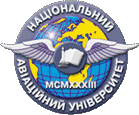ETHNOPOLITICS OF SWEDEN IN THE CONTEXT OF CULTURAL DIVERSITY
DOI:
https://doi.org/10.18372/2412-2157.41.19865Keywords:
ethnopolitics, interculturality, cultural diversity, cultural integration, intercultural tolerance, intercultural conflicts, polyethnicityAbstract
Introduction. The article examines Sweden’s multiethnic landscape, emphasizing the country’s multicultural evolution amid rising
migration. It outlines the impact of cultural diversity on Sweden’s societal development and explores the specifics of migrant integration into Swedish society. The aim is to consider Sweden’s ethnopolitics in the context of cultural diversity. Research methods include general scientific methods to explore cultural diversity and Sweden’s ethnopolitics. The principle of historicism clarifies migrant integration processes over time. Sociocultural and civilizational approaches reveal the specifics of Sweden’s multiethnic development and its response to cultural globalization. Research results. Sweden serves as an example of how cultural diversity in Europe cannot be ignored. The country promotes cultural equality while maintaining its own language and traditions. A key feature of Sweden’s integration model is its emphasis on intercultural dialogue: migrants are encouraged to respect local values through education, while their cultural identities are also recognized. This approach helps reduce the risk of intercultural conflict and positions Sweden as a model of multicultural development rooted in cultural pluralism. Discussion. The sustainability of Sweden’s cultural diversity amid rising migration depends on the continued effectiveness of its integration model based on cultural equality. While many European countries struggle with intercultural tensions linked to the migration crisis, Sweden exemplifies a long-standing approach that fosters dialogue and minimizes conflict through the recognition of equal cultural rights. Conclusions. Recent migration flows to Europe have intensified scholarly interest in the development of ethnopolitical strategies. In Sweden, ethnopolitics is shaped by the principle of cultural equality within a context of diversity, reflecting a soft model of multicultural integration. While the preservation of the national language and culture remains a priority—through policies promoting Swedish language acquisition and cultural education—migrants are also free to maintain their own traditions. Such a balanced approach fosters intercultural tolerance and facilitates effective intercultural communication, making Sweden’s case particularly relevant for further research on multicultural integration and ethnopolitical strategies in Europe.
References
Robertson R. Globalization: Social Theory and Global
Culture. SAGE. 1992. 224 p.
Дрожжина С. Мультикультуралізм: теоретичні і практичні
аспекти. Політичний менеджмент. 2008. № 3. С. 96-106.
URL: http://nbuv.gov.ua/UJRN/PoMe 2008 3 11 (дата звернення
01.2025).
Клименко Д. Теоретико-методологічний аналіз феномену
мультикультуралізму/ Вісник львівського університету.
Серія філос. політолог. студії. 2015. Випуск 7. – С. 177-182 /
URL: http://fps-visnyk.lnu.lviv.ua/archive/7 2016/21.pdf (дата
звернення: 16.02.2025).
Ляпіна Л. А. Мультикультуралізм як стратегія вирішення
проблем культурного розмаїття: аналіз теоретичих моделей.
Український соціум. 2017. № 1(60). URL: https://ukrsocium.
org.ua/wp-content/uploads/2017/01/60-71 no-1 vol-60
UKR.pdf (дата звернення: 14.02. 2025).
Підскальна О. Мультикультуралізм як феномен
постсучасного світу. Наукові записки Інституту політичних і
етнонаціональних досліджень ім. І. Ф. Кураса НАН України.
Вип. 3-4. С. 108-120. URL: http://nbuv.gov.ua/UJRN/
Nzipiend 2016 3-4 13 (дата звернення: 15.01.2025).
Русул О. В. Особливості розвитку культурного розмаїття в
державах Європи. Вісник Національного авіаційного
університету. Серія: Філософія. Культурологія: Збірник
наукових праць. Вип. 1 (39). К.: НАУ, 2024. –С. 127-130.
Шай Р. Теоретико-правові проблеми мультикультуралізму
як традиційної моделі адаптації. Вісник національного
університету «Львівська політехніка» 2018. Вип. 17. С. 56
URL: https://science.lpnu.ua/sites/default/files/journal-paper/2019/
aug/17885/11.pdf (дата звернення: 13.02.2025).

